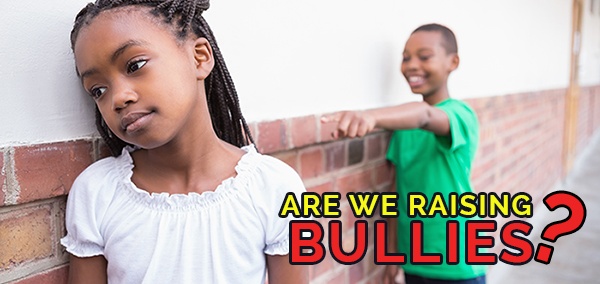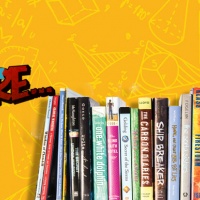Are We Raising Bullies?
Every bully is a child from a family. They receive the same care and support as other siblings. How does one child become a bully? Are there traits that suggest a child has the bullying tendencies? Do children become bullies for the fun of it or are they ‘pressed’ into it by some means?
There are 3 parties in a bullying cycle… the bullied, the bully and the bystanders. This reminds me of one of my favourite Western Movie --The Good, The Bad and The Ugly. Not that the movie was about bullies, but for the fact that; I see the bullied as “the good” because they don’t go out of their way to hurt others, the bully as “the bad” because as a shark would smell blood from afar, they can spot weakness in their victim and immediately start exerting superior strength to intimidate them and then the bystanders as “the ugly” because, though they might not directly bully others, they encourage and cheer the bully and even when they don’t, they still won’t speak up for the bullied.
Bullying is the use of superior strength or influence to intimidate someone, to force them to do what one wants. Bullying is unwanted, aggressive behaviour among school aged children that involves a real or perceived power imbalance. The behaviour is repeated, or has the potential to be repeated, over time. Bullying includes actions such as making threats, spreading rumours, attacking someone physically or verbally, and excluding someone from a group on purpose.
Bullying takes many forms; four most common ones are Verbal, Social, Physical and Cyberbullying. Usually, bullying starts with an imbalance of power or strength which then results to the feeling of superiority or resentment towards another person. In whatever form it takes, bullying has become so rampant in schools, so much so that it is almost seen as a norm.
A child can be bullied for being prude, too polite, pretty, neat, having a little too much, not having enough, brilliant or teacher’s favourite… the list is unending. Basically, the child that gets bullied is that one that shows a sign of weakness, has the inability to pick up on and respond to non-verbal cues from their peers or have some certain behavioural traits that can lead to social rejection.
Resources for Parents and Teachers:
- Resources for Educators
- Resources for Parents
- School-Wide Approaches
- Social and Emotional Learning
- Diversity and Inclusion
- Suicide Prevention
*Resources from Edutopia*
Bullying activities can take place within the school premises, on the streets after school hours or on social media, 24 hours of the day. The threats /promises made in school are sometimes carried out on the streets. Students engage in physical intimidation, which involves repeated hitting, kicking, tripping, blocking, pushing, and touching in unwanted and inappropriate ways. Allegiances are made, crews or gangs as it were, are formed or joined in desperation to ‘belong’ rather than be alone.
The effects of bullying lingers into adult life with consequences that are very damaging to the physical and mental health of an individual. What’s more is the fact that all parties to bullying are affected in one way or the other -- the bullied, the bully and the bystanders are all affected. This leaves us no choice but to ensure a bully free environment in schools.
Although many schools are making serious efforts to deal with bullying, parents are still the key to empowering their children to stop or prevent it. Generally, children will react to happenings that they are not comfortable with... most times the reaction is non-verbal, as they may still be processing the event or are afraid of the consequences of talking about the it. Parents and teachers should be very observant and mindful of sudden behavioural change in the child; if a child exhibit signs like Withdrawal, Aggression, Defiance, Brazenness, Timidity, Introversion… chances are, the child might either be bullied, be a bully or be a bystander.
When a child begins to exhibit strange traits, please do well to understand what might be the reasoning behind such sudden changes. When they are not checked, the end result is to get involved in vices that lead to addiction, depression, criminality and even suicide.
A damaged child becomes a damaged adult. And the cycle continues even to the leadership of the most revered positions of the country. The society reeks of individuals who have been damaged from childhood. This can be nipped in the bud if we take note of the early signs of a bully.
A child might be a bully if he/she;
- Has unexplained extra money or new belongings
- Laughs at other people’s misfortune
- Has little or no respect for others
- Has friends that show aggressive tendencies
- Says mean things about people or blame others for their problems
- Doesn't accept responsibility for his/her actions
- Has a set up prerequisite for associating with people or groups
- Rates people by a certain social standard
- Is competitive and worry about their reputation or popularity
Parents play the biggest role in preventing and responding to bullying. They should recognize the warning signs early by communicating with the child if they display any sort of behavioural or emotional changes -- they could be involved in bullying. Schools should also have strong disciplinary plans for erring students as well as sound befitting counselling for victims... by victims I mean all parties involved -- The Good, The Bad and The Ugly.












Comments